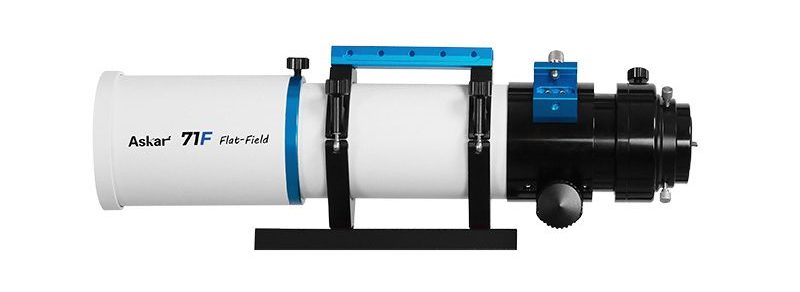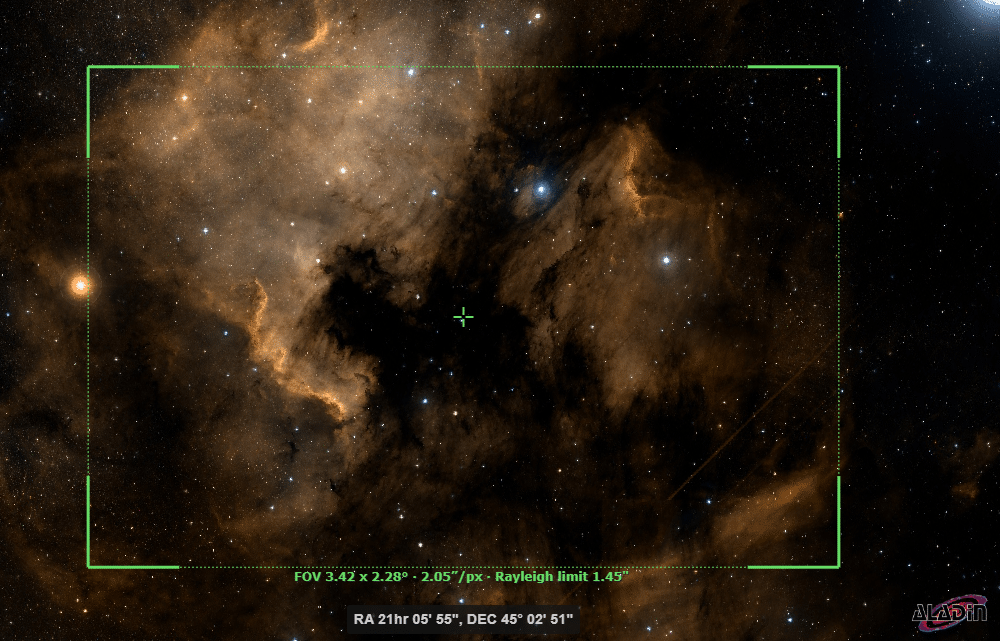Table of Contents
I have done it, after using my trusty old Tamron 150 – 600 mm lens for astrophotography for the past 6 months I have decided to purchase a new scope, and I must say that it has been a tough decision. But I decided to get the brand new Askar 71F flat-field refractor. Below I will share my thoughts on why I went for the Askar 71F and why I decided to get a new scope. Everything in this article was written before I got the actual scope.

The reasoning for getting a new scope
Over the past six months, I have been doing astrophoto. I have been using the same setup, my Nikon z5 mirrorless full-frame camera in combination with my Tamron 150 – 600 mm f/6.3 and a Sky-Watcher Star Adventurer GTi mount. This setup has been working great. However, after adding the guide scope and camera to the side of the L-bracket of the camera, my Astrophoto rig is heavy on one side and therefore extremely difficult to balance on the mount.
Furthermore, there is no locking screw for the focal length of the Tamron lens – when pointing to the sky I have to use sticky tape to keep the focal length constant, it works but it is a pain every time to tape everything down, and afterwards having to take the tape off.




With that said, the system has recorded some amazing shots of the night sky. Overall I have been quite pleased with the performance of the system. Delivering focal lengths between 150 mm and 600 mm is a huge advantage when trying to frame those nice shots of the night sky, but I must admit that I tend to use the 600 mm option.
Setting up criteria for a new scope
Having determined that a focal length close to 600 mm seems to work very well with my current camera. This seems like a good starting point. Since I live in Denmark we have quite a lot of toll on products purchased outside the EU, which limits my options quite dramatically. I decided to make a list from the online German store astroshop.eu since I have bought stuff there previously with good experience. So I went to their online store and started to limit my search. Firstly I wanted to get a refractor which left me with 369 possible choices.
Then I restricted the possible telescopes to those being good for astrophotography which limited the number of options to 237. Next up I selected the refractor must be an apochromat which further limits the options to 180, since I have a mount I ticked the no mount option limiting the number of refractors to 165.
Then I set the aperture to be between 70 – 90 mm and then I had 56 options to choose from. Finally, I restricted the focal length to less than 500 mm, which limited my search to 36 options. With 36 options to choose from ranging in price from $450 to $2500. Economy restricted the the field of contestants even further. Setting a limit of a maximum of $1000 limited the field to 15 possible refractors. From these 15 possible telescopes, the Askar 71F flat-field is the only one providing a flat field across a full-frame sensor like the one on the Nikon Z5.
Comparing the field of view
Now the Askar 71F flat-field has a focal length of 490 mm and an aperture of 71 mm which makes it a bit smaller than the Tamron 150 – 600 mm with a focal length of 600 mm and an aperture of 95 mm. So how does their field-of-view compare between the two scopes?


Above you can see a comparison of the FoV’s for the two scopes with the Nikon Z5 attached, the target is NGC 7000 the North American Nebula. The shift in FoV due to the 110 mm focal length difference does not seem to affect the overall impression. Furthermore, since the telescope already provides a flat field there is no need to buy additional field flatteners, which helps to reduce the overall cost of the setup. The only major problem as far as I can see has been the recently limited amount of reviews of this telescope.
Reviews of the Askar 71F flat-field
At the time of writing, there are only two video reviews on YouTube on this particular telescope. I have decided to share the review by Naztronomy. I hope you will find it informative.
Likewise, there have not been a lot of images taken with this telescope on AstroBin – but they have started to show up by now. See the astrobin page for more images taken with this scope. If you want to review the specs of this telescope I suggest you visit SharpStar optics website to see Askar’s info on the telescope here.
Once I receive the telescope I will post an update and update my equipment page with all the technical specifications of the scope, you can see my equipment page here.

